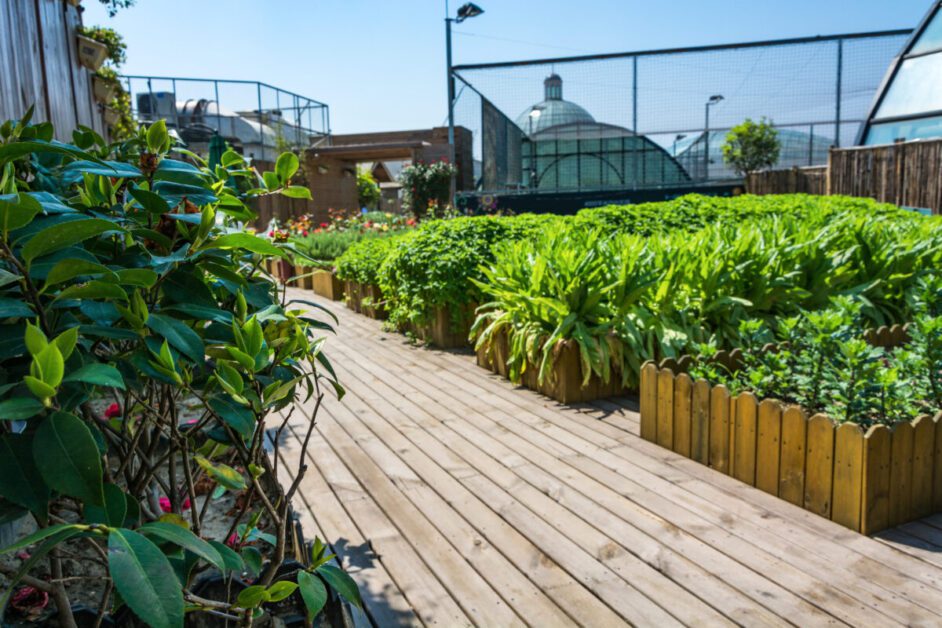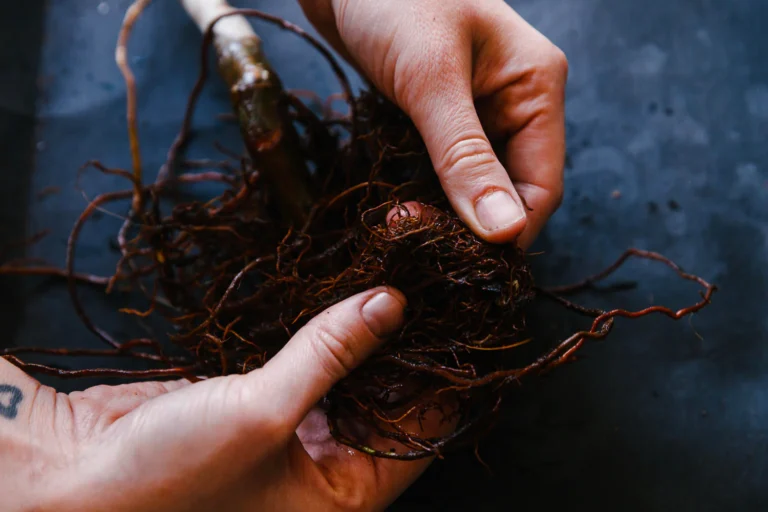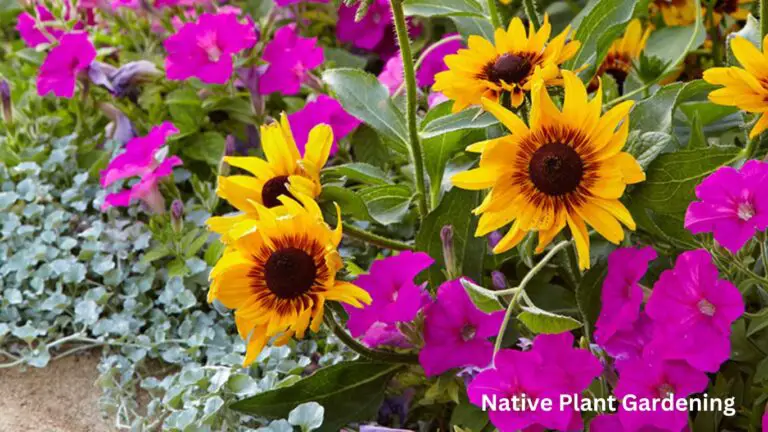How to Build and Plant a Raised Garden Bed in 5 Easy Steps
Table of Contents
Benefits of Raised Garden Beds
Raised garden beds offer numerous benefits for gardening enthusiasts. One of the main advantages is that they provide better drainage compared to traditional in-ground gardens. The elevated design allows excess water to easily drain away, preventing issues such as waterlogged soil and root rot. This is especially beneficial in areas with heavy rainfall or clay soil that tends to retain water.
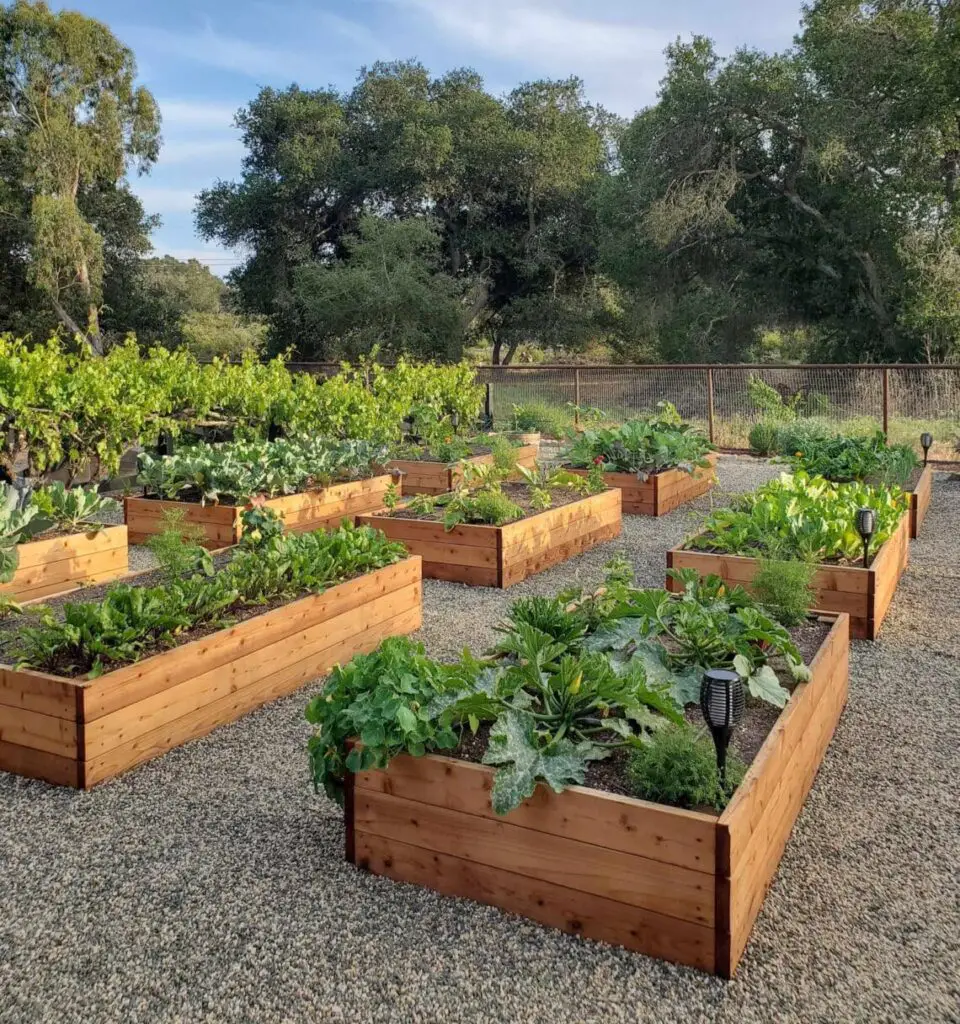
Another significant benefit of raised garden beds is the improved soil quality. By filling these beds with a mix of high-quality soil and compost, you can create a nutrient-rich growing environment for your plants. This is particularly advantageous for individuals gardening in areas with poor or contaminated soil. Additionally, raised garden beds provide better control over the soil’s composition, allowing you to tailor it to the specific needs of your plants.
Assessing Your Space and Choosing the Right Location
When embarking on the journey of creating a raised garden bed, it is crucial to assess your space and carefully select the right location. By taking the time to evaluate these factors, you can ensure the success of your gardening endeavor.
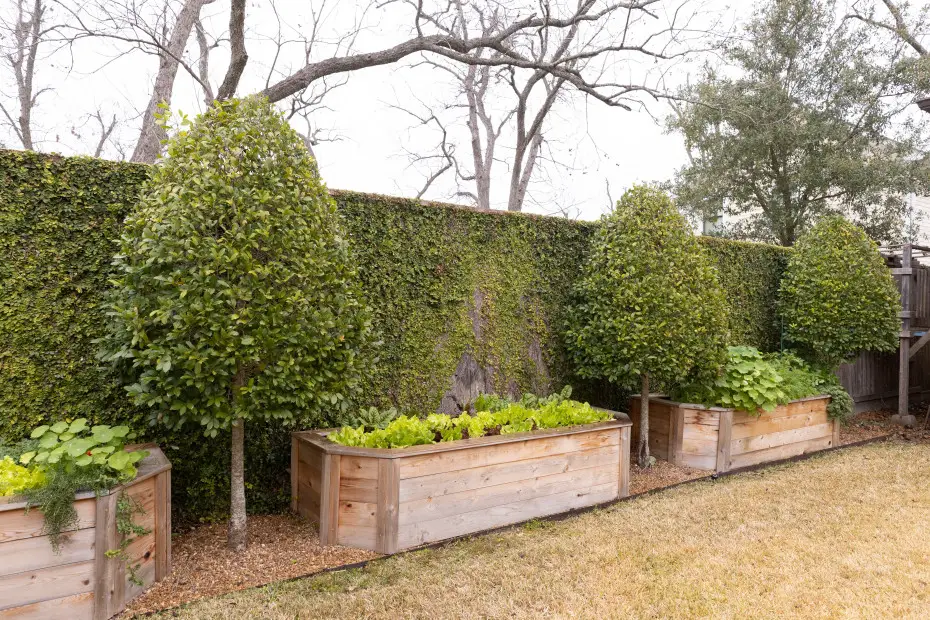
First and foremost, consider the amount of sunlight your chosen space receives throughout the day. Most vegetables, herbs, and flowers require at least six hours of direct sunlight to thrive. Take note of any buildings, trees, or other structures that may cast shadows and obstruct sunlight. This will help you determine if the location you have in mind is truly suitable for your plants’ needs.
In addition to sunlight, it is essential to evaluate the accessibility of your chosen location. Make sure the area is easily accessible for watering, weeding, and other maintenance tasks. Consider how far you will need to carry water or tools and select a spot that won’t pose challenges in terms of convenience. Furthermore, keep in mind the proximity to your home, as a closer location will make it easier for you to monitor and tend to your garden regularly.
By carefully assessing your space and choosing the right location, you lay the foundation for a thriving raised garden bed. Remember that each plant has different sunlight and accessibility requirements, so take the time to research and plan accordingly. With a well-selected location, you are on your way to a bountiful and beautiful garden.
Selecting the Ideal Materials for Your Raised Garden Bed
Selecting the ideal materials for your raised garden bed is crucial to ensure its longevity and effectiveness. When it comes to choosing the materials, there are several options to consider, each with its own benefits and drawbacks.
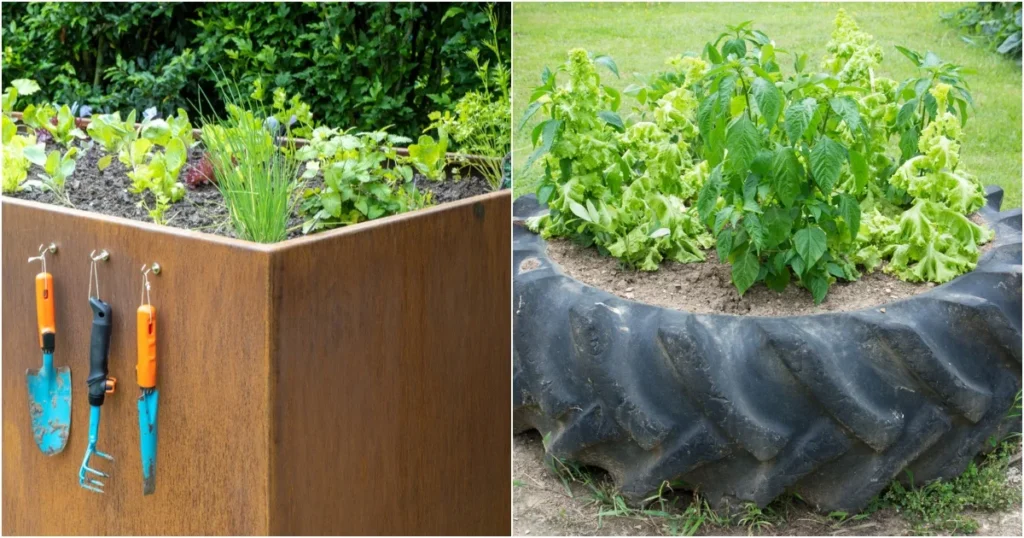
One popular choice for raised garden bed construction is using untreated wood such as cedar or redwood. These woods are naturally resistant to rot and decay, making them durable options for outdoor use. Additionally, they blend seamlessly into garden landscapes, adding an aesthetic appeal. However, it’s essential to ensure the wood is untreated to avoid any harmful chemicals leaching into your soil.
Another material option for raised garden beds is composite lumber. Made from a combination of wood fibers and recycled plastic, composite lumber offers durability and resistance to warping, rotting, and fading. Furthermore, it requires minimal maintenance, making it an attractive choice for busy gardeners. Just keep in mind that composite lumber can be more expensive than other materials, so it’s important to consider your budget.
Measuring and Planning the Dimensions of Your Garden Bed
Measuring and planning the dimensions of your garden bed is a crucial step in creating a successful and productive gardening space. By taking the time to carefully consider the size and layout of your raised bed, you can maximize your growing potential, ensure plant health, and make maintenance easier.
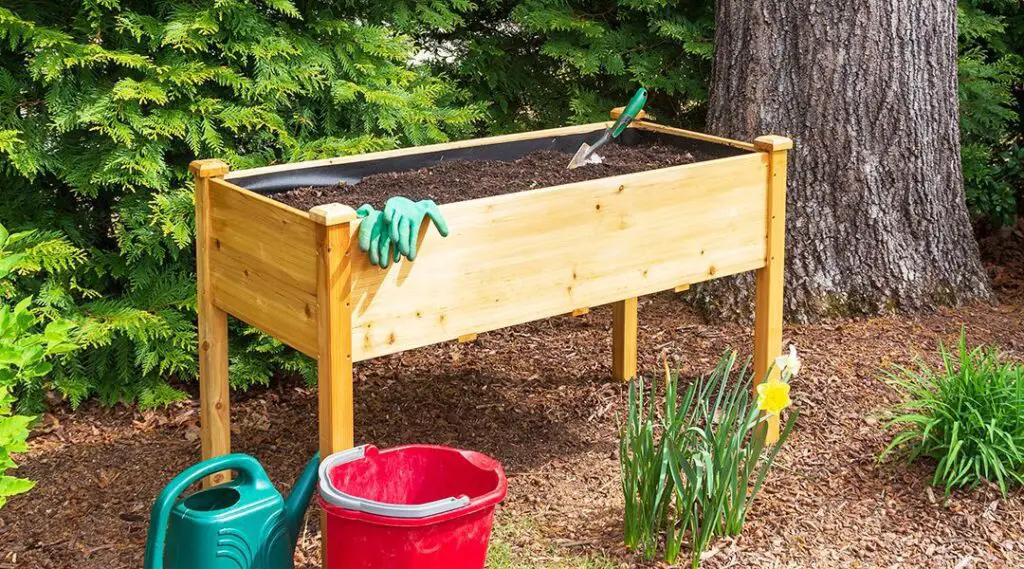
Firstly, start by assessing the available space in your garden or outdoor area. Consider factors such as sunlight exposure, accessibility, and any potential obstacles. You’ll want to choose a location that receives at least six hours of direct sunlight each day for optimal plant growth. Additionally, ensure that the area is easily reachable for watering, weeding, and harvesting.
Once you’ve selected an ideal spot, it’s time to plan the dimensions of your raised bed. An average raised garden bed is typically between 8-12 inches high, which allows for good root development and drainage. The width of your bed should be no wider than 4 feet to ensure easy access from both sides. However, if you have limited space or prefer a smaller bed, a width of 3 feet is also acceptable.
When it comes to the length of your garden bed, this can vary based on your available space and desired plant selection. However, keep in mind that longer beds can be challenging to maintain and may require additional support to prevent bowing or sagging. Consider dividing your bed into smaller sections, allowing for easier management and versatility in planting various crops.
By carefully measuring and planning the dimensions of your garden bed, you’ll set yourself up for gardening success. This thoughtful approach will not only optimize your growing space but also make maintenance a breeze, ensuring a thriving garden for years to come.
Preparing the Ground for Your Raised Garden Bed
Preparing the ground for your raised garden bed is an important step in ensuring the success of your gardening endeavor. Before you start constructing your bed frame, it is crucial to properly prepare the ground to create a supportive and healthy environment for your plants.
| Step | Task |
|---|---|
| 1 | Choose a suitable location for the bed |
| 2 | Clear the area of grass, weeds, and debris |
| 3 | Level the ground for a stable foundation |
| 4 | Install weed barrier or cardboard |
| 5 | Add a layer of gravel or small stones |
| 6 | Fill the bed with nutrient-rich soil |
| 7 | Mix in compost for added fertility |
| 8 | Water the soil thoroughly |
| 9 | Allow the bed to settle before planting |
First, you need to clear the area where you plan to place your raised garden bed. Remove any existing weeds, grass, or debris, as they can compete with your plants for nutrients and water. Use a garden rake or hoe to loosen the top layer of soil, breaking up any compacted areas.
Next, it is beneficial to amend the soil with organic matter. This can include compost, well-rotted manure, or leaf mold. Organic matter helps improve soil structure, drainage, and fertility. Spread a layer of the organic matter over the cleared area and use a garden fork or shovel to work it into the soil, mixing it thoroughly.
By preparing the ground before constructing your raised garden bed, you are providing a solid foundation for your plants to thrive. A well-prepped soil can improve nutrient uptake, root development, and overall plant health. So take the time to properly prepare your soil, and you’ll be rewarded with a bountiful and healthy garden.
Constructing Your Raised Garden Bed Frame
To construct a sturdy and functional raised garden bed frame, you will need a few basic materials and tools. Start by gathering untreated lumber or cedar boards, as these are durable and resistant to rot. Saw the boards into the desired lengths for your bed, ensuring that the sides are equal in height and the corners are square.
Next, assemble the frame by placing the boards in a rectangular shape, with the shorter boards overlapping the longer ones at the corners. Secure the boards together using galvanized screws or long nails, making sure to pre-drill the holes to prevent splitting. To reinforce the frame, add corner brackets or braces at each corner.
Once your frame is securely assembled, you may consider adding additional support in the center to prevent bowing or sagging. This can be achieved by attaching wooden stakes or metal rods along the length of the bed, ensuring they are driven into the ground to provide stability.
Remember to place your raised garden bed frame in a location that receives adequate sunlight and has good drainage. Avoid areas with excessive shade, as this can impede plant growth. By constructing a durable and well-designed frame, you are laying the foundation for a successful and productive raised garden bed.
Adding a Bottom Layer for Proper Drainage
When constructing a raised garden bed, it is important to consider proper drainage to ensure the health and vitality of your plants. Adding a bottom layer for drainage is a crucial step in this process. By creating a layer at the base of your raised bed that allows excess water to drain away, you can prevent waterlogged soil and the potential for root rot or other issues.
One effective method for achieving proper drainage is to use a layer of gravel or small stones as the bottom layer of your raised garden bed. This layer helps to create air pockets within the soil, which encourages drainage and prevents water from becoming stagnant. Additionally, the gravel or stones help to distribute excess water evenly throughout the bed, reducing the risk of water pooling in one area. By incorporating this bottom layer into your raised garden bed, you can promote healthy root growth and ensure that your plants receive the water they need without the risk of overwatering.
Filling Your Garden Bed with High-Quality Soil
Filling your garden bed with high-quality soil is an essential step in ensuring the success of your plants and the overall health of your garden. The type of soil you choose will directly impact the growth and productivity of your plants. When filling your garden bed, it is important to consider the specific needs of the plants you will be cultivating.
For optimal results, start by selecting a soil mix that is well-draining and nutrient-rich. As a general rule, a combination of compost, topsoil, and organic matter can provide a healthy foundation for your garden bed. High-quality compost is an excellent addition as it improves soil structure, enriches the soil with essential nutrients, and enhances moisture retention.
Consider conducting a soil analysis to determine the pH level and nutritional content of your chosen soil mix. This will help you identify any deficiencies or imbalances that could hinder plant growth. Adjust the pH level, if necessary, by adding amendments such as lime to raise the pH or sulfur to lower it.
Additionally, be mindful of the texture and structure of the soil. A well-aerated soil that allows for adequate water drainage and root development is crucial. You can improve the structure of the soil by incorporating organic matter like compost or aged manure, which helps loosen compacted soil and promotes beneficial microbial activity.
Remember, the quality of your soil plays a vital role in the health and productivity of your plants. By selecting and preparing high-quality soil, you are providing your garden with the essential foundation it needs to thrive.
Choosing the Right Plants for Your Raised Garden Bed
When selecting the plants for your raised garden bed, it is important to consider the specific needs and requirements of each plant. One key factor to consider is the amount of sunlight your garden bed receives. Most vegetables, herbs, and flowers require at least 6 hours of direct sunlight per day to thrive. Therefore, it is crucial to choose plants that are suitable for the amount of sunlight your garden bed receives.
Additionally, it is essential to consider the size and spacing requirements of the plants you choose. Some plants, such as tomatoes or squash, can grow quite large and require ample space to spread out. On the other hand, smaller plants like herbs or lettuce can be grown in closer proximity. Proper spacing ensures that each plant has sufficient room to grow and receive the necessary nutrients and sunlight. Consult a plant spacing guide or refer to the instructions provided on the seed packets for guidance on spacing requirements.
Overall, selecting the right plants for your raised garden bed is crucial for successful gardening. Taking into account the sunlight requirements and spacing needs of each plant will help ensure healthy growth and abundant harvests. Remember to consider other factors such as soil type, climate, and your personal preferences when making your plant selections.
(Note: This is a short section and does not provide a complete conclusion as per the instructions)
Planting Your Chosen Vegetables, Herbs, or Flowers
After carefully preparing the ground and constructing your raised garden bed, it’s time to move on to the exciting part: planting your chosen vegetables, herbs, or flowers. Selecting the right plants for your raised garden bed is essential for ensuring a successful and bountiful harvest. Consider the specific needs of each plant, such as sunlight requirements, soil preferences, and spacing recommendations.
Before you start planting, take a moment to plan out the layout of your garden bed. Arrange the plants in a way that optimizes their growth and allows for easy access and care. Group plants with similar water, light, and nutrient requirements together to create a harmonious and thriving garden ecosystem.
When transferring seedlings or planting seeds, be gentle with the roots to avoid any damage. Ensure that the depth and spacing of the holes are appropriate for each plant. Follow the recommendations provided on the seed packets or consult reliable gardening resources for guidance. As you plant, gently firm the soil around the roots to provide stability and support for the plants.
Remember to water your newly planted vegetables, herbs, or flowers adequately. Use a watering can or hose with a gentle spray to avoid disturbing the delicate young plants. Regularly monitor the moisture levels in the soil and adjust your watering routine accordingly. Over time, your efforts will be rewarded as you watch your garden bed come alive with vibrant growth and abundant produce!
Providing Proper Care and Maintenance for Your Raised Garden Bed
Proper care and maintenance are essential for ensuring the long-term success of your raised garden bed. By implementing a few key practices, you can keep your plants healthy and thriving throughout the growing season.
First and foremost, regular watering is crucial for the well-being of your plants. The frequency and amount of water you provide will depend on various factors, such as the type of plants, local climate, and soil conditions. To determine the optimal watering schedule, check the moisture level by inserting your finger about an inch into the soil. If it feels dry, it’s time to water. It’s important to avoid overwatering, as this can lead to root rot and other issues. Mulching around your plants can help retain moisture and reduce the frequency of watering.
Additionally, regular weeding is essential to prevent unwanted competition for nutrients and space. Weeds can quickly take over and deprive your plants of the resources they need to thrive. Make it a habit to inspect your raised garden bed frequently, removing any weeds as soon as you spot them. This will ensure that your plants have ample room to grow and flourish.
Stay tuned for the full article where we’ll explore more tips and techniques to provide the utmost care and maintenance for your raised garden bed.
Troubleshooting Common Issues in Raised Garden Beds
One of the advantages of raised garden beds is that they can help minimize common issues that gardeners often face. However, there are still some challenges that may arise. One common issue is poor drainage, which can lead to waterlogged soil and root rot. To address this, ensure that your garden bed has sufficient drainage holes or a layer of rocks at the bottom to promote proper water flow. Additionally, avoid overwatering your plants and consider using a well-draining soil mix.
Another issue that may arise is weed growth. Weeds can compete with your plants for nutrients and water, reducing their overall health and productivity. To tackle this problem, use a weed barrier or plastic sheeting beneath your garden bed to prevent weed seeds from germinating. Regularly inspect your raised bed for any signs of weed growth and promptly remove any unwanted plants. Mulching the soil surface with organic materials can also help suppress weed growth while providing additional benefits such as moisture retention and temperature regulation. By addressing these common issues, you can ensure that your raised garden bed thrives and yields a bountiful harvest.
• Poor drainage can lead to waterlogged soil and root rot.
• Ensure that your garden bed has sufficient drainage holes or a layer of rocks at the bottom.
• Avoid overwatering your plants and consider using a well-draining soil mix.
• Weed growth can compete with your plants for nutrients and water.
• Use a weed barrier or plastic sheeting beneath your garden bed to prevent weed seeds from germinating.
• Regularly inspect your raised bed for any signs of weed growth and promptly remove any unwanted plants.
• Mulching the soil surface with organic materials can help suppress weed growth while providing additional benefits such as moisture retention and temperature regulation.
Harvesting and Enjoying the Fruits of Your Labor
Harvesting and enjoying the fruits of your labor is undoubtedly the most rewarding part of gardening in raised beds. After carefully tending to your plants and providing them with the ideal conditions for growth, it’s time to reap the benefits. The moment when you can pluck fresh vegetables, fragrant herbs, or vibrant flowers from your own raised garden bed is truly satisfying.
One of the key advantages of raised garden beds is that they promote better yield and easier access to your plants. The elevated design reduces strain on your back and knees, allowing for comfortable harvesting. As you reach for those ripe tomatoes or plump strawberries, you’ll appreciate the convenience that raised beds offer. Additionally, the controlled environment of raised beds often leads to healthier and more abundant harvests, ensuring that you can enjoy an abundant supply of homegrown produce throughout the growing season.
To make the most of your harvest, timing is crucial. Different crops have varying maturity periods, so it’s essential to familiarize yourself with the recommended harvest times for each plant. Harvesting too early may result in underdeveloped produce, lacking in flavor and nutritional value. On the other hand, waiting too long may lead to overripe or spoiled crops. By keeping track of the days to maturity and regularly inspecting your plants for signs of readiness, you can time your harvests perfectly and savor the full flavors and textures of your garden’s bountiful offerings.
So, let’s dive into the exciting process of harvesting and enjoying the fruits of your labor in a raised garden bed. From the crisp crunch of freshly picked lettuce to the vibrant hues of juicy raspberries, each experience will be a testament to your dedication and skill as a gardener. Get ready to savor the rewards and share the abundance with friends and family, knowing that each bite comes from your very own raised garden bed.
For more details check the vedio given below:
What are the advantages of using raised garden beds?
Raised garden beds offer several benefits, including improved drainage, better soil quality, easier access for planting and maintenance, and the ability to control pests and weeds more effectively.
How do I choose the right location for my raised garden bed?
When selecting a location for your raised garden bed, consider factors such as sunlight exposure, accessibility to water, and proximity to your home. Ideally, choose a spot that receives at least six hours of sunlight per day and is close to a water source.
What materials should I use to construct my raised garden bed?
Common materials for building raised garden beds include wood, bricks, concrete blocks, or metal. It is important to choose materials that are durable, rot-resistant, and safe for growing plants.
How do I determine the dimensions of my raised garden bed?
The dimensions of your raised garden bed will depend on the available space and your gardening needs. Consider factors such as the type and number of plants you plan to grow, as well as your ability to reach the center of the bed for maintenance purposes.
How do I prepare the ground before installing my raised garden bed?
To prepare the ground, remove any existing grass, weeds, or debris from the area. Level the ground and loosen the soil to ensure proper drainage. It may also be beneficial to lay down a weed barrier to prevent weed growth.
What should I use for proper drainage in my raised garden bed?
Adding a bottom layer of gravel or small rocks can help improve drainage in your raised garden bed. This layer allows excess water to escape, preventing waterlogged soil and potential root rot.
What type of soil should I use to fill my raised garden bed?
It is recommended to use high-quality, well-draining soil mix specifically formulated for raised beds. This type of soil typically contains a blend of organic matter, compost, and other nutrients necessary for healthy plant growth.
How do I choose the right plants for my raised garden bed?
Consider factors such as your climate, available sunlight, and personal preferences when selecting plants for your raised garden bed. Research the specific requirements of each plant and choose varieties that are compatible with each other.
How do I properly care for and maintain my raised garden bed?
Regularly water your plants, monitor for pests or diseases, and provide necessary support for climbing plants. Additionally, consider adding organic mulch to retain moisture, prevent weeds, and regulate soil temperature.
What are some common issues that can arise in raised garden beds?
Common issues in raised garden beds include overwatering, under-watering, nutrient deficiencies, pests, and diseases. Proper monitoring, regular maintenance, and timely intervention can help prevent or address these issues.
How do I harvest and enjoy the produce from my raised garden bed?
Harvesting is typically done when the fruits, vegetables, or herbs are ripe. Follow specific guidelines for each plant to ensure proper harvesting techniques. Enjoy the fruits of your labor by incorporating them into meals, sharing with friends and family, or preserving them for later use.

Kanike Sreekanth, a prolific writer at SouthElMonteHydroponics, brings a unique blend of creativity and scientific rigor to the table. With a degree in Horticulture from a prestigious institution, Kanike’s expertise spans hydroponic farming, plant biology, and agricultural sustainability. Their passion for exploring innovative cultivation methods and promoting environmental stewardship drives them to uncover new insights in the realm of hydroponics. Kanike’s writing serves as a conduit for sharing their knowledge and inspiring others to embrace alternative farming practices for a more sustainable future.

